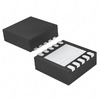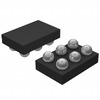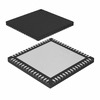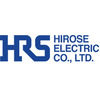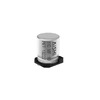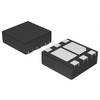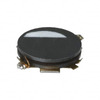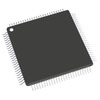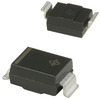Understanding the TIP42C Power Transistor: Pinout, Datasheet Breakdown, and Usage
The TIP42C is a robust PNP power transistor, renowned for its reliable performance in power amplification and switching applications. Encased in a TO-220 package, it incorporates advanced base island technology, optimizing efficiency and heat dissipation. This design makes the TIP42C an ideal choice for high-power circuits, especially in audio amplifiers and power management systems. With its ability to handle up to -100V and -6A, the TIP42C excels in delivering stable, long-lasting operation under demanding conditions, making it a preferred option for both consumer and industrial applications.Catalog
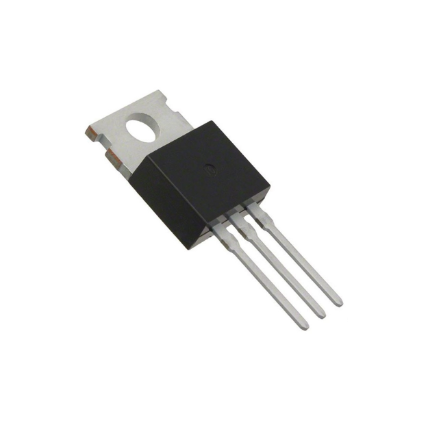
TIP42C Overview
The TIP42C embodies a PNP power transistor housed in a TO-220 plastic package. This series includes four variations: TIP42, TIP42A , TIP42B, and TIP42C. The TIP42C stands out for its voltage capacity, able to handle up to -100V, offering exceptional versatility for numerous switching and amplification uses. Its frequent pairing with the NPN counterpart, the TIP41C, further emphasizes its balanced application in electronic designs.
Designed to dissipate up to 65W and manage a maximum collector current of -6A, the TIP42C is favored in power-intensive contexts. Typical utilizations include audio amplifiers, where sound clarity is dominant, and power management systems, ensuring consistent energy flow. Drawing from practical uses, the TIP42C's stability in varying temperature conditions makes it invaluable for switching regulators within power supply units. The TO-220 package augments its heat dissipation, significantly prolonging its operational life, a trait treasured in both consumer electronics and industrial machinery.
When a system demands complementary transistor pairs, the TIP42C combined with the TIP41C emerges as an excellent choice. This synergy simplifies circuit design while boosting overall performance. This pairing enhances sound quality in audio amplification circuits, a subtle yet impactful improvement in audio technology. In the TIP42 series, the TIP42C's notable higher voltage capacity makes it ideal for high-voltage applications. On the other hand, for projects with lower voltage needs, the TIP42 and TIP42A might suffice. However, for more strenuous demands, the TIP42B and TIP42C are the go-to options. Each variation carries unique attributes suitable for specific requirements, making the selection process both serious and fascinating.
TIP42C Pin Configuration

|
Pin No. |
Pin Name |
Description |
|
1 |
Base |
Controls the biasing of the transistor and is used to
turn on/off the transistor |
|
2 |
Collector |
Where the current flows in, normally connected to load |
|
3 |
Emitter |
Where the current flows out, normally connected to ground |
CAD Model OF TIP42C
Detailed Schematic Symbol
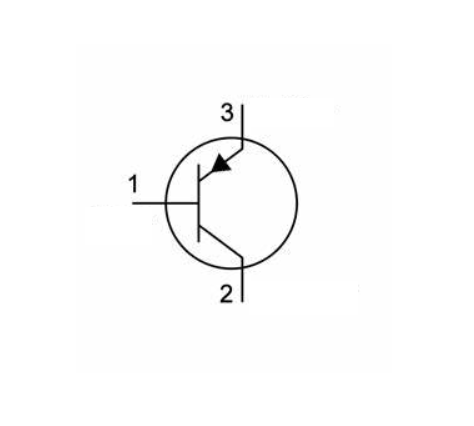
Precision PCB Footprint

Immersive 3D Representation

Core Features of TIP42C
|
Feature |
Specification |
|
Transistor Type |
PNP |
|
Package Type |
TO-220 |
|
Max Collector Current (IC) |
-6A |
|
Max Collector-Emitter Voltage (VCE) |
-100V |
|
Max Collector-Base Voltage (VCB) |
-100V |
|
Max Emitter-Base Voltage (VEBO) |
-5V |
|
Max Collector Dissipation (Pc) |
65 Watts |
|
Max Transition Frequency (fT) |
3 MHz |
|
DC Current Gain (hFE) |
15 - 75 |
|
Max Storage & Operating Temperature |
-65 to +150°C |
Advantages of TIP42C
Complementary Design
The TIP42C series introduces a PNP-NPN complementary design, markedly boosting circuit efficiency and performance. Complementary pairs, such as those found in this series, facilitate seamless operation in both amplification and switching scenarios, thereby reducing the need for extra components and streamlining circuit layouts.
High-Speed Switching
A striking benefit of the TIP42C series lies in its high-speed switching capability. This feature supports rapid state transitions with minimal delay, ideal for applications demanding quick response times like motor control and signal processing. The component's ability to switch swiftly enhances overall system efficiency and reliability, making it a favored choice for power supply circuits that require stable and efficient operation.
Improved hFE Linearity
The TIP42C series stands out for its improved hFE linearity. Elevated linearity in the current gain (hFE) ensures consistent amplification properties over a diverse range of operating conditions. This reliability translates into more predictable and stable performance, especially active for analog signal processing and precision instrumentation. In practical applications, this means operational amplifiers and analog circuits can achieve high fidelity, maintaining the integrity of the signals they process.
Grouped hFE
TIP42C transistors feature grouped hFE values, categorized based on their current gain range. This provides an advantage in applications necessitating matched pairs by simplifying the design process and cutting down on individual testing efforts. Grouped hFE values ensure that paired transistors function uniformly, a settling aspect in differential amplifier designs and other symmetrical circuitry configurations.
Technical Specifications
|
Type |
Parameter |
|
Lifecycle Status |
ACTIVE (Last Updated: 8 months ago) |
|
Factory Lead Time |
8 Weeks |
|
Mount |
Through Hole |
|
Mounting Type |
Through Hole |
|
Package / Case |
TO-220-3 |
|
Number of Pins |
3 |
|
Weight |
4.535924g |
|
Transistor Element Material |
SILICON |
|
Collector-Emitter Breakdown Voltage |
100V |
|
Number of Elements |
1 |
|
hFEMin |
15 |
|
Operating Temperature |
150°C TJ |
|
Packaging |
Tube |
|
JESD-609 Code |
e3 |
|
Part Status |
Active |
|
Moisture Sensitivity Level (MSL) |
1 (Unlimited) |
|
Number of Terminations |
3 |
|
ECCN Code |
EAR99 |
|
Terminal Finish |
Matte Tin (Sn) |
|
Voltage - Rated DC |
-100V |
|
Max Power Dissipation |
65W |
|
Current Rating |
-6A |
|
Base Part Number |
TIP42 |
|
Pin Count |
3 |
|
Element Configuration |
Single |
|
Power Dissipation |
65W |
|
Transistor Application |
SWITCHING |
|
Gain Bandwidth Product |
3MHz |
|
Polarity/Channel Type |
PNP |
|
Transistor Type |
PNP |
|
Collector Emitter Voltage (VCEO) |
100V |
|
Max Collector Current |
6A |
|
DC Current Gain (hFE) (Min) @ Ic, Vce |
15 @ 3A 4V |
|
Current - Collector Cutoff (Max) |
700μA |
|
JEDEC-95 Code |
TO-220AB |
|
Vce Saturation (Max) @ Ib, Ic |
1.5V @ 600mA, 6A |
|
Transition Frequency |
3MHz |
|
Collector Base Voltage (VCBO) |
100V |
|
Emitter Base Voltage (VEBO) |
5V |
|
Height |
15.75mm |
|
Length |
10.4mm |
|
Width |
4.6mm |
|
REACH SVHC |
No SVHC |
|
Radiation Hardening |
No |
|
RoHS Status |
ROHS3 Compliant |
|
Lead Free |
Lead Free |
Functional Equivalents of TIP42C
|
Part Number |
Description |
Manufacturer |
|
2N2646-JQR-AR1 |
Power Bipolar Transistor, 10A (IC), 70V V(BR)CEO,
1-Element, PNP, Silicon, TO-204AA, Metal, 2 PIN, Hermetic Sealed, Metal,
TO-3, 2 PIN |
TT Electronics Resistors |
|
2N2646-MODR1 |
10A, 70V, PNP, SI, Power Transistor, TO-204AA, Hermetic
Sealed, Metal, TO-3, 2 PIN |
TT Electronics Power and Hybrid / Semelab Limited |
|
BUX66 |
Transistor |
General Electric Solid State |
|
JAN2N6212 |
Transistor, BJT, PNP, 300V (BR)CEO, 2A IC, TO-66 |
Intersil Corporation |
|
MJ2500 |
Medium Power Transistors Complementary Silicon |
New Jersey Semiconductor Products Inc |
|
2N4240R1 |
5A, 300V, NPN, SI, Power Transistor, TO-66, TO-66, 2 PIN |
TT Electronics Power and Hybrid / Semelab Limited |
|
2N2647 |
Transistor |
API Technologies Corp |
|
2N2647-JQR-B |
Power Bipolar Transistor, 10A (IC), 90V V(BR)CEO,
1-Element, PNP, Silicon, TO-204AA, Metal, 2 PIN, Hermetic Sealed, Metal,
TO-3, 2 PIN |
TT Electronics Resistors |
|
2N6313-MOD |
5A, 600V, PNP, SI, Power Transistor, TO-213AA, Hermetic
Sealed, Metal, TO-66, 2 PIN |
TT Electronics Power and Hybrid / Semelab Limited |
|
JAN2N6211 |
Power Bipolar Transistor, 2A (IC), 225V V(BR)CEO,
1-Element, PNP, Silicon, TO-66, Metal, 2 PIN, TO-66, 2 PIN |
Microsemi Corporation |
Complementary NPN Transistor
•TIP41C Transistor
The TIP41C transistor is designed to handle a collector-emitter voltage (Vce) of up to 100V. It is capable of managing a collector current (Ic) of 6A without compromising performance. This transistor can dissipate power up to 65W, making it suitable for applications where heat management is a concern. The TIP41C has a junction temperature (Tj) that can reach up to 150°C, offering reliability under substantial thermal stress.
Operating within a storage temperature range from -65°C to 150°C, the TIP41C can endure harsh conditions. Its robust construction ensures functionality in a variety of demanding environments. Audio Amplification and Signal Processing. The TIP41C transistor often finds its use in audio amplification systems, where it contributes to the clarity and power of sound. In motor control applications, it assists in regulating motor speed, providing a smooth and efficient transition between motor states. This capability closely aligns with its current handling properties. The TIP41C serves in relay drivers due to its ability to switch and control high-current loads efficiently. Its power management abilities ensure consistent performance.
When integrating the TIP41C into a circuit, consider the appropriate heat sink to prevent overheating, which could affect performance and lifespan. Pay attention to its saturation voltage (Vce(sat)) and switching times (ton and toff) when designing circuits that require rapid switching, as these parameters influence overall efficiency and speed. Proper biasing is required to maintain the TIP41C’s stability in various operational conditions. Assess the external resistors and capacitors to ensure reliable performance.
Applications for TIP42C
The TIP42C finds extensive usage in high-power applications within electronic circuits, adeptly managing up to -6A collector current and -100V collector-emitter voltage.
Power Switching and Control
Owing to its considerable current and voltage management capabilities, the TIP42C is a good choice for driving high-power switches and relays. These applications include motor control systems where the precision of power delivery to the motor can significantly affect performance. For instance, in industrial automation, the operation of heavy machinery often depends on transistors to handle high loads without succumbing to overheating or failure.
High Power Audio Amplifiers
The TIP42C is also effective in powering high-wattage audio amplifiers, enabling audio amplification up to 65W. This ensures clear and powerful sound output, which is suitable for consumer audio systems. For example, the robust amplification provided by these transistors is dangerous in live concert sound systems, ensuring audio signals are boosted without distortion.
General Circuits
TIP42C finds extensive use in general circuit designs due to its characteristic as a PNP bipolar junction transistor. Its resilience allows it to adeptly handle a broad array of voltage and current levels, thus boosting circuit stability. When employed in common emitter configurations, it contributes significantly to the amplification of voltage signals.
Battery Chargers
In battery charging applications, TIP42C is basic for regulating charging voltage and current, ensuring the process is both quick and secure. Observations from actual applications highlight thermal management as insistent for maintaining consistent performance over prolonged periods.
Darlington Pair Configurations
TIP42C finds effective use in Darlington pair configurations to obtain higher current gain. This arrangement amplifies input currents markedly, making it suitable for applications demanding superior current amplification. Utilizing heat sinks in practical implementations aids in maintaining operational stability and prolongs the device's lifespan.
TIP42C Packaging
Package Dimensions
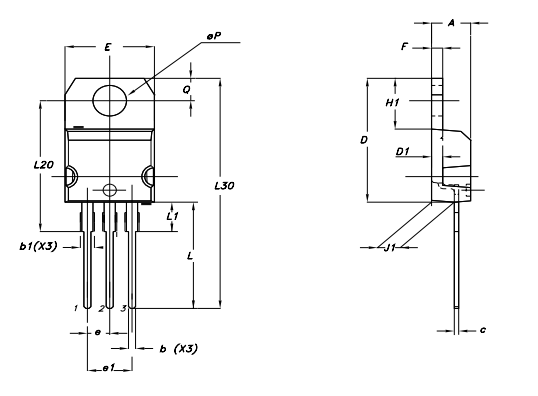
Mechanical Specifications
|
Dim |
mm |
inch |
||||
|
Min |
Typ |
Max |
Min |
Typ |
Max |
|
|
A |
4.4 |
4.6 |
0.173 |
0.181 |
||
|
b |
0.61 |
0.88 |
0.024 |
0.034 |
||
|
b1 |
1.14 |
1.7 |
0.044 |
0.066 |
||
|
c |
0.49 |
0.7 |
0.019 |
0.027 |
||
|
D |
15.25 |
15.75 |
0.6 |
0.62 |
||
|
D1 |
1.27 |
0.05 |
||||
|
E |
10 |
10.4 |
0.393 |
0.409 |
||
|
e |
2.4 |
2.7 |
0.094 |
0.106 |
||
|
e1 |
4.95 |
5.15 |
0.194 |
0.202 |
||
|
F |
1.23 |
1.32 |
0.048 |
0.051 |
||
|
H1 |
6.2 |
6.6 |
0.244 |
0.256 |
||
|
J1 |
2.4 |
2.72 |
0.094 |
0.107 |
||
|
L |
13 |
14 |
0.511 |
0.551 |
||
|
L1 |
3.5 |
3.93 |
0.137 |
0.154 |
||
|
L20 |
16.4 |
0.645 |
||||
|
L30 |
28.9 |
1.137 |
||||
|
ØP |
3.75 |
3.85 |
0.147 |
0.151 |
||
|
Q |
2.65 |
2.95 |
0.104 |
0.116 |
||
Manufacturer Information
STMicroelectronics is a pioneer in semiconductor innovation, excelling mostly in System-on-Chip (SoC) technology. The company offers a diverse array of silicon and system solutions to cater to varied microelectronics applications.
Renowned for its SoC technology, STMicroelectronics integrates multiple functions into a single chip, boosting efficiency and performance. In the fast-paced technological landscape, compact and reliable processing units are coveted. Through continuous innovation and adaptation, STMicroelectronics ensures their SoC solutions rise to the occasion, reflecting the wisdom gained through years of experience.
STMicroelectronics provides a broad spectrum of silicon solutions in microcontrollers, analog and mixed-signal components, sensors, and power ICs. These elements are key in the creation of advanced electronic systems, promoting seamless integration and optimal functionality. Their system solutions embody a deep understanding of hardware and software interactions, which allows their products to perform admirably in a variety of settings. STMicroelectronics’ vast intellectual property (IP) portfolio signifies its commitment to continuous innovation. This wealth of patents and proprietary technologies empowers the company to deliver unique and up-to-date solutions. By strategically leveraging their IP assets, they offer distinct advantages in product development, much like utilizing accumulated expertise to foster ongoing innovation.
STMicroelectronics’ strong manufacturing capabilities ensure consistent product quality and dependability. Utilizing state-of-the-art facilities and stringent quality control measures, each product meets exacting industry standards. The adoption of advanced manufacturing techniques and a culture of continuous improvement enables the company to sustain its competitive edge in the semiconductor market.
Datasheet PDF
TIP42C Datasheets:
TIP41C Datasheets:
TIP42A Datasheets:
Frequently Asked Questions [FAQ]
1. What is TIP42C?
The TIP42C is a silicon-based PNP power transistor, lauded for its efficiency in both amplification and switching applications. Its serious electrical characteristics include a 100V voltage tolerance across both collector-emitter and base-collector terminals. This transistor's versatility positions it as a favored option in numerous electronic circuits.
2. How to ensure TIP42C longevity in circuits?
Ensuring the TIP42C's longevity in circuits involves adhering to various best practices are appropriate thermal management is ultimate. Utilizing a well-suited heatsink can notably reduce overheating risks. An adequate base resistor is requisite for controlling the base current, thereby preventing unnecessary power dissipation. It is prudent to avoid exceeding -6A and -100V load limits to prevent electrical stress, which could undermine the transistor's integrity. Maintaining operating conditions at least 20% below the maximum ratings is a wise approach. This buffer can extend the component's lifespan and bolster overall reliability. Practical experience in electronics demonstrates that conservative operational margins promote both component longevity and system stability. Also, ensuring that storage and operating temperatures remain within the -65°C to +150°C range is vital for preserving the transistor's silicon structure.
About us
ALLELCO LIMITED
Read more
Quick inquiry
Please send an inquiry, we will respond immediately.

A Comprehensive Guide to the ATmega16 8-bit AVR Microcontroller
on October 18th

Comparing LR44 and 357 Batteries: Interchangeability and Differences
on October 18th
Popular Posts
-

What is GND in the circuit?
on January 1th 3296
-

RJ-45 Connector Guide: RJ-45 Connector Color Codes, Wiring Schemes, R-J45 Applications, RJ-45 Datasheets
on January 1th 2826
-

Understanding Power Supply Voltages in Electronics VCC, VDD, VEE, VSS, and GND
on November 21th 2690
-

Fiber Connector Types: SC Vs LC And LC Vs MTP
on January 1th 2271
-

Comparison Between DB9 and RS232
on January 1th 1892
-

What Is An LR44 Battery?
Electricity, that ubiquitous force, quietly permeates every aspect of our daily lives, from trivial gadgets to life-threatening medical equipment, it plays a silent role. However, truly grasping this energy, especially how to store and efficiently output it, is no easy task. It is against this background that this article will focus on a type of coin cell battery that may seem insignificant on the...on January 1th 1849
-

What Is RF and Why Do We Use It?
Radio Frequency (RF) technology is a key part of modern wireless communication, enabling data transmission over long distances without physical connections. This article delves into the basics of RF, explaining how electromagnetic radiation (EMR) makes RF communication possible. We will explore the principles of EMR, the creation and control of RF signals, and their wide-ranging uses. The article ...on January 1th 1818
-

Understanding the Fundamentals:Inductance Resistance, andCapacitance
In the intricate dance of electrical engineering, a trio of fundamental elements takes center stage: inductance, resistance, and capacitance. Each bears unique traits that dictate the dynamic rhythms of electronic circuits. Here, we embark on a journey to decipher the complexities of these components, to uncover their distinct roles and practical uses within the vast electrical orchestra. Inductan...on January 1th 1817
-

CR2430 Battery Comprehensive Guide: Specifications, Applications and Comparison to CR2032 Batteries
What is CR2430 battery ?Benefits of CR2430 BatteriesNormCR2430 Battery ApplicationsCR2430 EquivalentCR2430 VS CR2032Battery CR2430 SizeWhat to look for when buying the CR2430 and equivalentsData Sheet PDFFrequently Asked Questions Batteries are the heart of small electronic devices. Among the many types available, coin cells play a crucial role, commonly found in calculators, remote controls, and ...on January 1th 1806
-

Comprehensive guide to hFE in transistors
Transistors are crucial components in modern electronic devices, enabling signal amplification and control. This article delves into the knowledge surrounding hFE, including how to select a transistor's hFE value, how to find hFE, and the gain of different types of transistors. Through our exploration of hFE, we gain a deeper understanding of how transistors work and their role in electronic circu...on November 21th 1797



